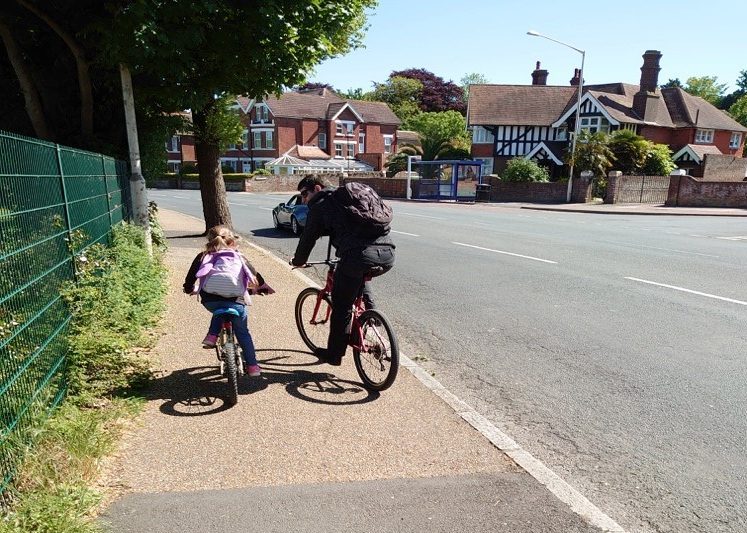Perhaps the most contentious debate in transport at the moment is Local Traffic Neighbourhoods (LTNs). They are a hot topic across the UK, especially in London, and even more so during Covid-19. LTNs are usually a relatively cheap and quick way to change the dynamics of the streets in an area. During Covid-19 they are being funded by the Government as emergency measures to provide safer walking and cycling whilst discouraging car use as public transport is operating with limited capacity apart from school buses. LTNs are linked to the wider ideas of 15-minutes cities and 20-minute neighbourhoods. Where most things people need are nearby and so there is less need for a car. This builds up the idea of community and increases residents’ exercise which reduces chronic illness in future years.
LTNs are areas where most through traffic has been removed from local residential streets. This might involve barriers, bollards, planters or other street furniture that blocks the roads for through traffic, whilst allowing pedestrians and cyclists. Often there are solutions using keys or barriers that allow emergency vehicles and buses access. If you are interested, Waltham Forest is a multi-award winner with various LTNs. There although most people are in favour there is a smaller vociferous group against. Just take a look at Social Media to follow the conversation.

So why is the subject so contentious.
- Some opponents believe that they should be allowed to drive in any street to complete their journey in the shortest time. They do not agree with the phrase rat running where traffic will use residential roads when main roads are blocked. This is a problem that will grow with more congestion in Eastbourne.
- Opponents believe there is a fixed amount of traffic and if you prevent through traffic in LTNs, it will simply get to the main roads. However, supporters will say how LTNs often show that after a while residents have 20% fewer cars, 20% fewer trips and 20% less time in the car. Since cars are the least efficient use of road space when driven or parked this is a big saving. This 20% saving can also be partly linked to other initiatives such as safer cycling routes or more local shops in the pedestrianised streets.
- Opponents say that where there are Residential Main Roads (RMRs) the pollution and congestion will be worse. These roads often have the poorest housing, so these residents are then further disadvantaged. However, evidence from London shows that within LTNs are large blocks of social housing so it is not always so clear cut. Opponents make the point that in LTNs, if these streets are now more pleasant, they will be gentrified and the working classes will be squeezed out. This would be much less of an issue in Eastbourne.
- Within any LTN there is often an increase in cycling and children walking to school as the risk from injury from motor vehicles is reduced. Where school streets are closed then some parents who drive and want to drop off their children are frustrated from doing so.

So what could this mean in Eastbourne? Normally these could be implemented in the more deprived areas. So for example the area around Seaside, St Philips Avenue, and St Anthony’s is a matrix of streets that can be used as rat runs. One simple improvement would be 20mph zones but so would modal filters, such as signs and bollards, that limit access by certain modes of transport, normally motor vehicles, and would deter through traffic.
In more affluent areas such as Sovereign Harbour, they are already similar to an LTN. Meandering cul-de-sacs that are not interconnected apart from by cycle or foot. Very slow traffic, local shops and any traffic displaced from main roads have no way through these estates. Rather they will go through Langney, Seaside or along the seafront.
In conclusion, now is the time to look at the idea of LTNs within the town. Let us see if we can improve the quality of life in these local neighbourhoods.
Paul Humphreys
Bespoke & Cycle East Sussex
Photo credit: Paul Gillett
